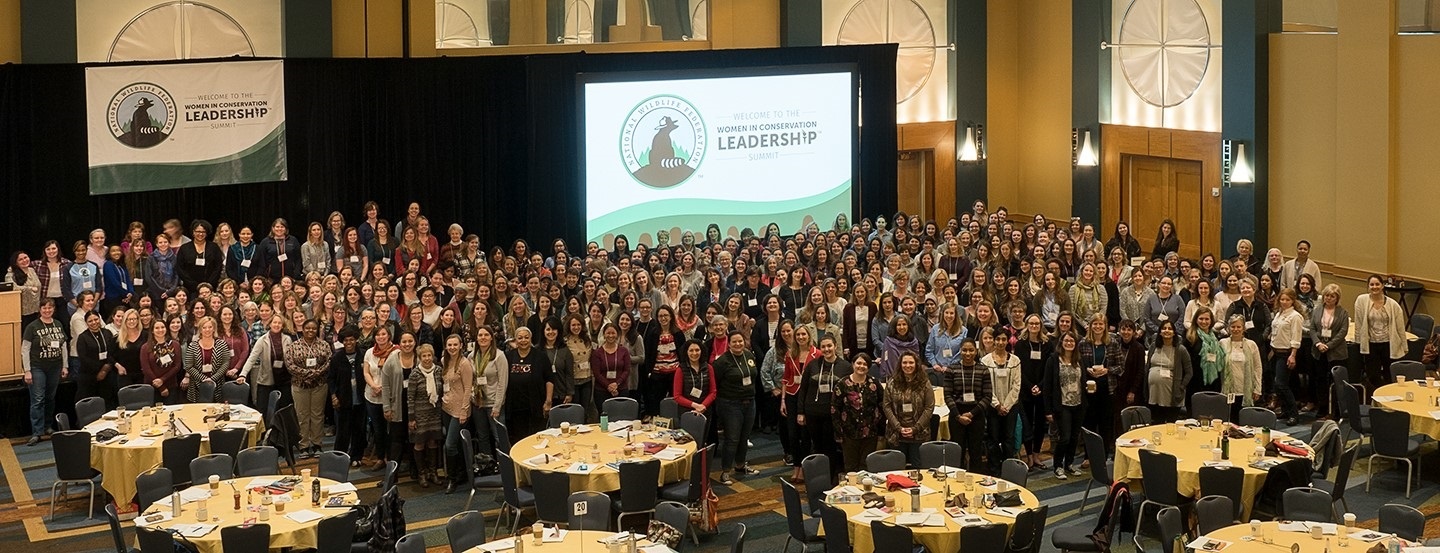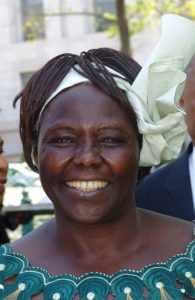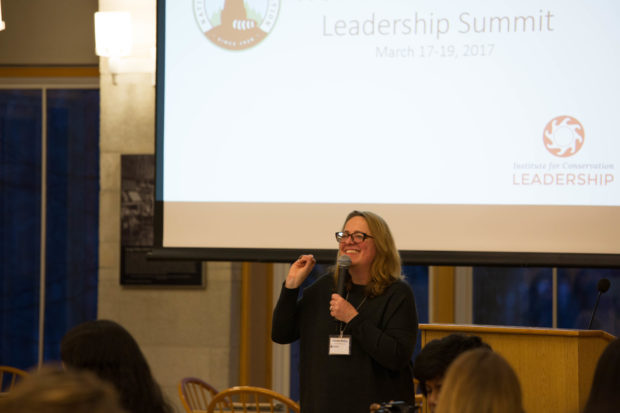We have much more to do and your continued support is needed now more than ever.
Women in Conservation Leadership: Connecting through Conservation

The National Wildlife Federation is proud to announce the third Women in Conservation Leadership Summit will take place on March 16-19, 2020 at the Cheyenne Mountain Resort in Colorado Springs, Colorado.
Women in Conservation Leadership is an inclusive, national community that acts as a catalyst to elevate and embolden all women in advancing conservation. We believe in building a conservation community that knows leadership from women of all ethnicities, races and cultures is vital to the success of the movement. The 2020 Women in Conservation Leadership Summit will put these ideas into practice through discussion, training, hands-on skill building, networking, and resources for all women in conservation – from students to industry veterans, and everyone in between.
“Empowering women from diverse backgrounds will make us more effective as we advocate for the well-being of fish and wildlife and the habitats and conditions they need.”
-Chanté Coleman, Choose Clean Water Coalition Director (National Wildlife Magazine, “Summit empowers women, promotes diversity”)

A History of Change-Making
The list of women’s contributions to the conservation movement all over the world is impressive.

- Harriett Hemmingway crusaded to save birds from the demands of the late 19th and early 20th century feather-filled fashion trends and went on to found the Massachusetts Audubon Society.
- Margie Richard’s advocacy for her community of Norco, Louisiana eventually caused Shell Oil to reduce its toxic emissions by 30 percent, contribute $5 million to a community development fund, and voluntarily finance the relocation of affected residents.
- Lois Gibbs led the women of her Niagara Falls community to evacuate and relocate 800 families after discovering that tons of chemical waste was buried in the nearby Love Canal.
- The environmentalist, politician, economist and Native American land rights activist Winona LaDuke has spent her career working on national level to create, support and fund environmental groups.
- And the Green Belt Movement in Kenya, which has reduced poverty and environmental degradation through planting trees, was founded by Wengari Maathai.
Women leaders have been advancing wildlife conservation for generations and the ongoing advancement of their leadership is critical to protections habitat and populations all over the world.
State of Women in Conservation
While the conservation community has made significant progress in advancing women’s leadership, there is still a gender gap with men occupying the most powerful positions in environmental and conservation organizations (Green 2.0, 2019). We see an even larger gap in representation from women of color in leadership positions, posing a unique challenge to address equality across the spectrum. In order to strengthen and fortify our conservation efforts, our industry needs to find a solution to mend its leadership gap. Women in Conservation Leadership is one important part of this solution.

Why Relationship-Building & Mentorship Matter
By facilitating relationship building between women within the conservation community, Women in Conservation Leadership aims to equip women with the support networks, mentorship, and peer to peer coaching opportunities that can pave the way for leadership roles. Studies support the idea that more diverse leadership teams would shape a stronger conservation movement: a 2018 McKinsey report found that organizations with more gender-diverse executive teams financially outperformed those with less diversity by more than 20 percent. A previous McKinsey report also found that leadership behaviors more frequently adopted by women are critical to navigating challenging situations, such as those following a crisis. In addition, diverse and inclusive workforces demonstrate positive business outcomes, including over 12 percent more discretionary effort, a 19 percent greater intent to stay and 42 percent greater commitment to the team.
The first step in increasing the number of women in high level leadership roles is acknowledging that women in conservation face unique challenges and that addressing those challenges is key to a successful and strong conservation movement. Through the Women in Conservation Leadership Program, the National Wildlife Federation is committed to giving women the voice they deserve and bringing gender, racial and cultural equality to fruition throughout the environmental community.
If you are interested in learning more or joining the Women in Conservation Leadership community please contact Elizabeth Lillard (lillard@nwf.org) or check out our website at wcl.nwf.org.





















